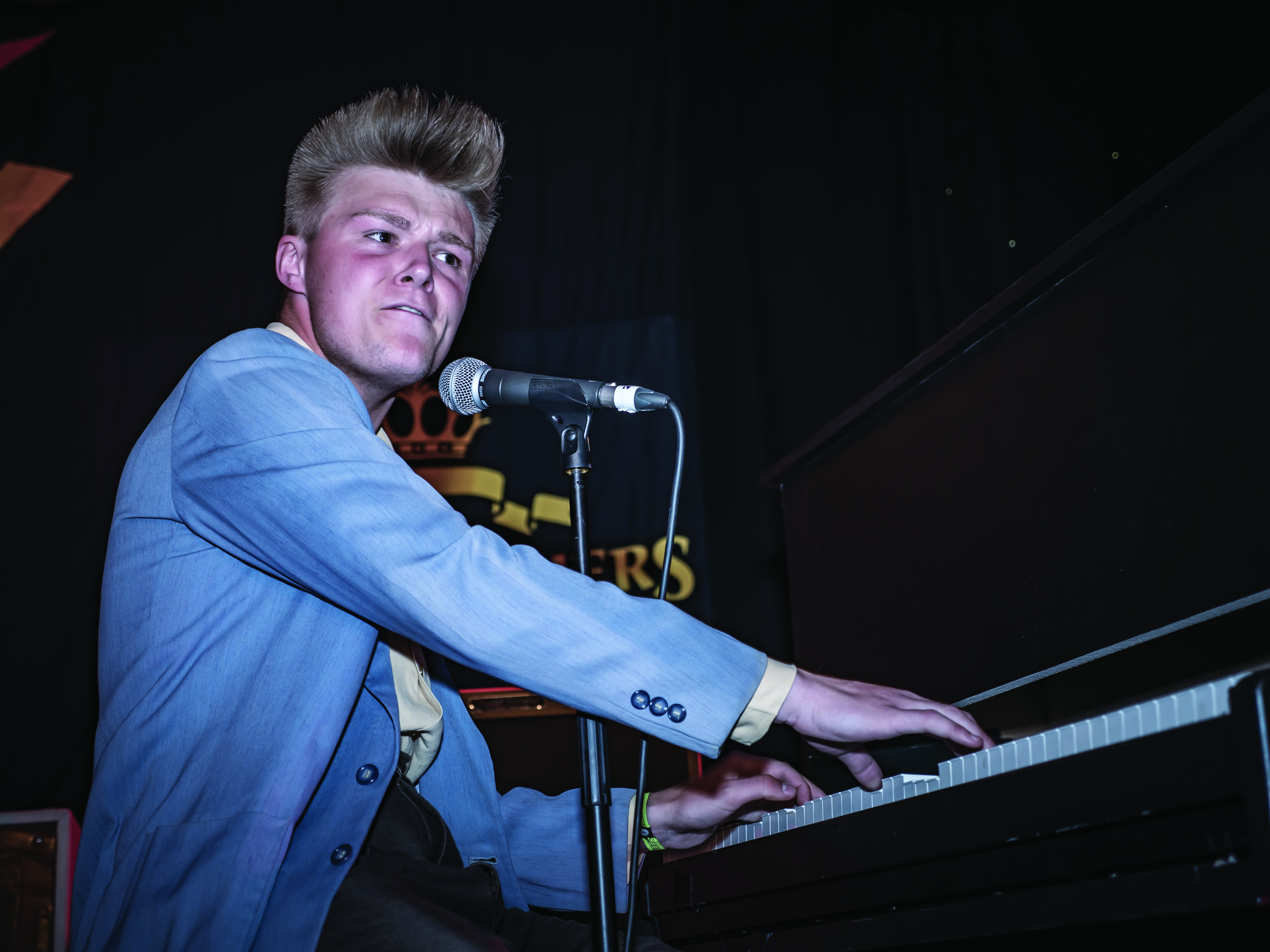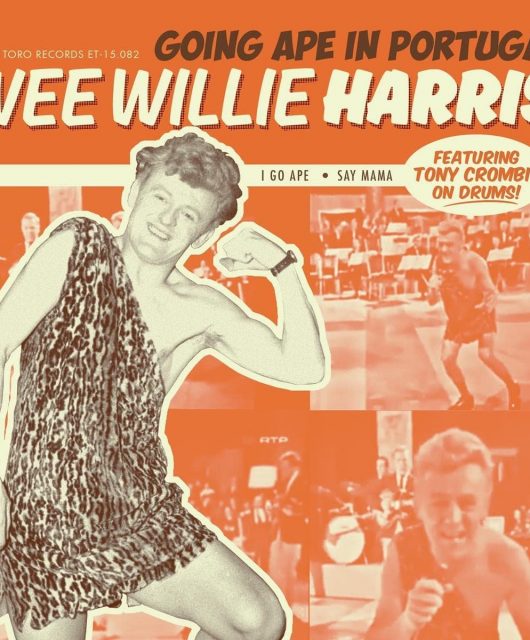Supposedly intended to appeal to potential older record buyers who had been alarmed by his incendiary style, the Little Richard (1958) LP actually lives up to the performer’s billing as ‘The Quasar Of Rock’n’Roll’… Words by Jack Watkins
The biopic, Little Richard: I Am Everything, got panned by more discerning critics for the lack of time spent on the great man’s actual music. Instead, the documentary chose to obsess about his image, but you could argue this was par for the course. Of all the major early rockers, comparatively little time seems to have been spent talking about Little Richard’s records.
The output of the likes of Fats Domino, Bill Haley, Chuck Berry, Elvis Presley, Gene Vincent, Jerry Lee Lewis, The Everly Brothers and Buddy Holly has been well assessed. But with Richard, the standard biography remains Charles White’s The Life And Times Of Little Richard, written 40 years ago. “Sent from God,” as Richard put it in a round of publicity interviews he did to mark its publication in 1984, this book remains a compelling work, but it is basically an authorised oral history, very much as seen through the performer’s eyes. Once again, the personality tends to overwhelm the songs.
Joy & Energy
Early rock’s charm lies in its simplicity. Just as when you examine the magic of the Marx Brothers or Laurel and Hardy, you risk losing what made their work funny in the first place. The genius of “Awopbopaloobop-Alopbamboom!” is self-evident. Who wants to get heavy about Little Richard? As his biographer, interviewed in 2015, put it: “His voice was so powerful, it was like a fire blizzard across an Arctic waste, but it was so full of joy and energy.” What more do you really need to say?
However, the fact is that the music of Richard Wayne Perriman, born in Macon, Georgia, in 1932, didn’t emerge out of nothing. The great records of his most productive era in the recording studio, which ran from his first Specialty session in September 1955 through towards the end of 1957, were actually the result of much perseverance, and many retakes and post-session work, for all their apparent immediacy.
They drew on a considerable supporting cast, including Specialty Records’ shrewd boss Art Rupe, his A&R man Robert ‘Bumps’ Blackwell, New Orleans studio manager and recording engineer Cosimo Matassa and some talented session players who were central to the New Orleans sound, as well as the personnel of Richard’s road band The Upsetters.
Explosive Energy
Little Richard was released in 1958, by which time he had left the music business to study for the ministry. The sleevenotes referred to his fans all over the world “anxiously waiting for him to resume making movies and personal appearances”.
In the event, his next recordings would be in the gospel field, and he wouldn’t return to rock’n’roll until cajoled to sing his old songs on a UK tour in 1962. Here’s Little Richard, his Specialty debut LP released in 1957, had sold well, making the Billboard Top 20. Rolling Stone later included it in its 500 Greatest Albums Of All Time.
Supposedly, although it was another compilation dominated by songs that had already been hits for the star, the second album was a subtle change of tack. Richard’s frenetic live and filmed appearances, thrashing away at the ivories with eyes popping at the camera beneath a mile-high pompadour, had apparently alarmed many parents whose kids were thrilled by his discs.
Rather than finding joy in his music, they found his screech disturbing. In an effort to reach out, as well as to vary the tone, Rupe decided it wise to include a couple of oldies they might recognise, namely By The Light Of The Silvery Moon and Baby Face. Given these were, as the sleevenotes put it, “done up in Little Richard style,” it’s hard to believe he won over many converts. But you never know.
The Wild One
Baby Face is a song people may now most associate with Al Jolson, but it dated back to the 1920s. It had made No.41 in the US when released as a single for Richard. Even more remarkably, it was his biggest UK hit, reaching No.2, thus even outperforming Long Tall Sally.
If Richard’s singing on Baby Face was relatively restrained, it was far less so on the even more antiquated By The Light Of The Silvery Moon. Dating back to early 20th century music hall, by now it was a standard and had been recorded by everyone from the Ray Noble Orchestra and Fats Waller to Bing Crosby and Doris Day.
However, Little Richard’s squealing interpretation recorded at the same New Orleans session as Baby Face in 1956, was very much in the rockin’ mode. In fact, the song was in vogue among his contemporaries around this time. A Jackie Wilson singalong version, topped off with his characteristically creamy falsetto, went out as the B-side to his Reet Petite in 1957.
An Etta James version, recorded in New Orleans, deploying her rasp to good effect, owed more to Little Richard, as did a sightly milder one by Gene Vincent that was recorded after The Screaming End had toured with The Georgia Peach.
Pedal To The Metal
For the rest, it was pretty much pedal to the metal stuff, with several tracks what we would now consider as archetypal Little Richard material. The torrid Keep A Knockin’, another US Top 10 hit, was an unrelenting avalanche of noise which saw Richard and the tenor saxophonist, Grady Gaines from The Upsetters, competing for raucousness after Charles Connors’ thrashing drum intro. In fact, the number was quite painstakingly worked up, with L.A engineer Bunny Robyn piecing several takes together with smart tape editing. As John Broven points out in his Rhythm And Blues In New Orleans, this would have been impossible just a few years earlier in the time of direct-to-disc.
Another track, Ooh! My Soul, brilliantly catches the flavour of Richard’s camp style in his delivery of its hook. It was recorded at the same radio station in Washington D.C. in early 1957 as Keep A Knockin’and also partly inspired Ritchie Valens’ Ooh, My Head.
Don’t Knock The Rock
There’s a certain looseness to the songs Richard did with The Upsetters. I’ll Never Let You Go (Boo Hoo Hoo Hoo), or Boo Hoo Hoo Hoo as it appears on the label, is another example here. In fact, Little Richard had wanted to use his own band on all his recordings, telling Charles White that, “if Specialty had recorded me live with The Upsetters that would have been the most exciting rock’n’roll of all time.”
It was Connor’s drum roll which apparently inspired his expression “Awopbopaloobop-Alopbamboom!” first heard on Tutti Frutti. Connor was an early exponent of the backbeat at a time when most drummers disdained it for the more complex jazz stylings of Buddy Rich or Max Roach. Grady Gaines, who created song arrangements the band worked up while on the road, can be seen soloing on top of Richard’s piano on Long Tall Sally in the movie Don’t Knock The Rock. Gaines would later say that he tried to match the force in Richard’s voice in his sax playing.
The other songs on the album were all recorded in Cosimo Matassa’s J&M Studio in New Orleans, with Crescent City’s classic session personnel, including Alvin ‘Red’ Tyler (baritone sax), Lee Allen (tenor sax), Roy Montrell (guitar), Frank Fields (bass), and Earl Palmer (drums).
The Girl Can’t Help It
Good Golly, Miss Molly, written by ‘Bumps’ Blackwell with John Marascalco, is the favourite Richard song of many, although the opening riff was lifted from Ike Turner’s piano intro on Jackie Brenston And His Delta Cats’ Rocket “88”. Once again, the seeming spontaneity was the result of multiple retakes. While ‘Bumps’ recalled Richard was the only artist who pounded the piano so hard several times he broke the strings, Blackwell, and sometimes Rupe, drove him hard to commit the dynamism of his live performances to tape.
It was also Rupe who prevailed on 20th Century Fox to let Little Richard sing the title song to the CinemaScope film The Girl Can’t Help It instead of Fats Domino, correctly arguing that he would bring more youthful excitement to its delivery. Rupe himself oversaw the session, and of course the beautifully photographed film showcased the artist himself in all his gleaming, wild-eyed, zoot-suited glory, singing Reddy Teddy.
It’s Got A Back Beat, You Can’t Lose It
Lucille had a bass-driven riff that would become something of a cliché rock sound, Palmer sounding “as if he were using baseball bats and kicking a 30-foot bass drum” as Max Weinberg wrote in The Big Beat: Conversations With Rock’s Greatest Drummers.
Send Me Some Lovin’ was one of the best ballads Richard, not at his best in that idiom, ever did. It was executed in the classic New Orleans style. Hey-Hey-Hey-Hey was old school R&B with bigger afterburners attached, but Heeby-Jeebies was another of the pricelessly breathless, barely-in-control numbers that no one but Little Richard could pull off. Creating the crucial backdrop to all these songs were ‘Red’ Tyler, usually on baritone sax, and Lee Allen, on tenor sax.
With its star now out of the limelight undertaking his religious studies in an Alabama college, Little Richard didn’t sell, though that didn’t stop Specialty releasing a gentler album of old material, The Fabulous Little Richard, a year later. However, that wasn’t a patch on its predecessor, which showed that the singer was always at his best when he stuck to the up-tempo songs.
By our Vintage Rock Presents Little Richard here
Read More: Little Richard Is Back






